Since Star Trek: Discovery‘s second season concluded earlier this year, fans have crying out for more time with Captain Pike, Lieutenant Spock, Number One, and the adventures of the USS Enterprise.
Satiating some of that desire, author John Jackson Miller’s newest novel, The Enterprise War — which we reviewed in mid-August — tells the story about what happened to the Enterprise during the time of the Klingon/Federation War depicted in Discovery Season 1.
We had the opportunity to catch up with Miller to discuss the plot of the novel, the characters, making starship combat interesting, and aligning Star Trek novels with TV content — but be warned, THIS INTERVIEW CONTAINS SPOILERS!
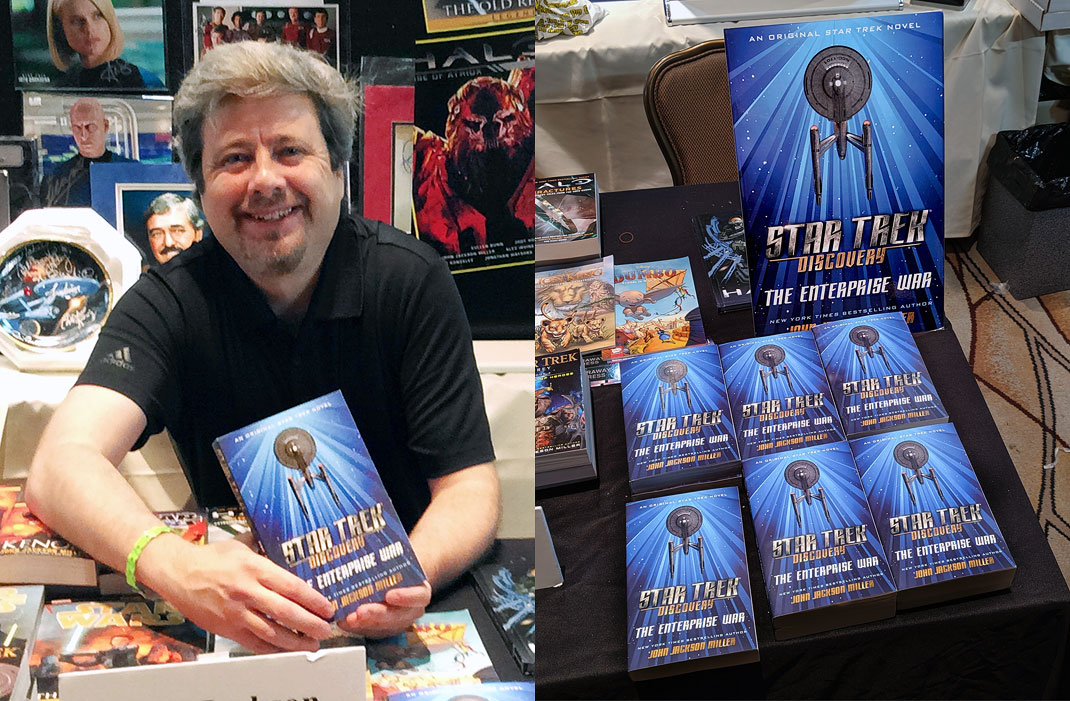
TREKCORE: Kirsten Beyer and the Star Trek: Discovery series writers have been working with the Discovery novel authors for each release to date — what was your experience like writing The Enterprise War, and how did the show team influence your story?
JOHN JACKSON MILLER: I was asked to write a novel that filled in the blanks during the Klingon War to answer the question of where the Enterprise was, where Pike was, and where Spock was. And also to help link Anson Mount’s version of Christopher Pike with the Jeffrey Hunter version of the character [see in “The Cage” who was] very reluctant about what he’s doing.
He’s very fearful of losing crewmembers, and yet as we see later — in Anson Mount’s portrayal — he has got these impulses to try and help wherever he can and he’s trying to balance those things.
Pretty much the only thing that was dictated was that I knew that the opening sequence of the book would involve Pike learning about the war and turning [the Enterprise] towards home; that he would be stopped and turned back; and that he would be unhappy about it.
That part of the book would tie into the material that you see in [“Project Daedalus,”] where Pike is talking with Cornwell about them being kept out of the action in part because of his compunctions about how Starfleet was being run.
Everything after that, though — which is basically 90% of the book following that — all came from me.
TREKCORE: How did the writing of the book match up with the production of the series? Did you get to see any footage of Anson Mount playing Pike and Peck playing Spock while you were writing, or were you just going off the scripts?
MILLER: The first draft was completed with the knowledge of what the characters would be doing and what they would be like, and everything that would be happening in the season. The episodes had only just begun streaming when I turned in the first draft, and so I was able to make some tweaks to the draft based on the characters as we saw them [in “Brother”], such as Pike, Connolly, and Nhan.
Then there’s a proofreading process, and by the time the final episode of Season 2 had begun streaming, we were working on the final pass, which is the last go around on the book before it is published — and so once again I was able to make some adjustments.
We were also able to include some things that haven’t happened yet. There is a character — just a supporting character — but the name is there, who will be appearing in one of the Short Treks that [will be streaming later in 2019].
That is a fun thing to be able to do in this kind of book.
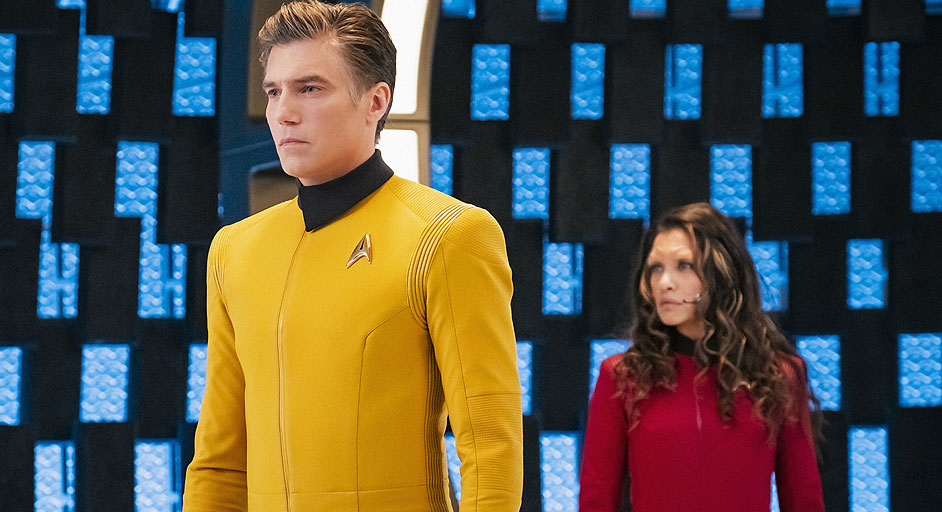
TREKCORE: That’ll be exciting for fans who have read the book to watch the Short Trek and realize that’s a character they’ve already met before.
MILLER: Yeah, and it wasn’t a major character. Since I knew there would be a number of Enterprise crew members that would be appearing in the TV show that I didn’t have a lot of control or knowledge about what their futures would be, I tended to work with characters where I already knew their beginning, middle, and end, as in the case of [Lieutenant] Connolly or [chief engineer] Galadjian.
For Galadjian, I already knew there was a different engineer mentioned in the TV series [Chief Louvier], so that gave me some freedom to go my own way. If I had tried to build him into [Louvier], that might have conflicted had they decided [in the show] to do something with that character later on that would differ from my portrayal.
For Connolly, since we know his fate [in “Brother”], I felt free to write as much of a backstory for him as I wanted.
TREKCORE: How did you approach adding more depth and backstory to Connelly, who only had a small amount of screen time in “Brother?”
MILLER: The character we saw in the season premiere is a bit of a jerk. He’s headstrong, and even though he is in the science division he really is gung-ho about getting out into the action. That connected to where we were in the beginning of this novel because everyone on the Enterprise has cabin fever. They’re really tired of being on the ship because they have been in this nebula unable to have a shore leave of any kind for a very long time.
I also wanted to give Connolly a particular hobby that connected to what the group that imprisoned him is involved in. There’s a group called ‘the Boundless,’ a military organization that is organized into all these different platoons, and it was something where they are frequently trading back and forth personnel to fill out their rosters, so to speak.
So I decided I would give Connolly an interest in baseball, because there are very similar dynamics in how rosters are filled out and how players as opposed to soldiers could be traded. As we see with the Boundless, one of the Enterprise crew members is traded for a gun. I thought that was an interesting way to tie something he would know about in with an experience that he was dealing with.
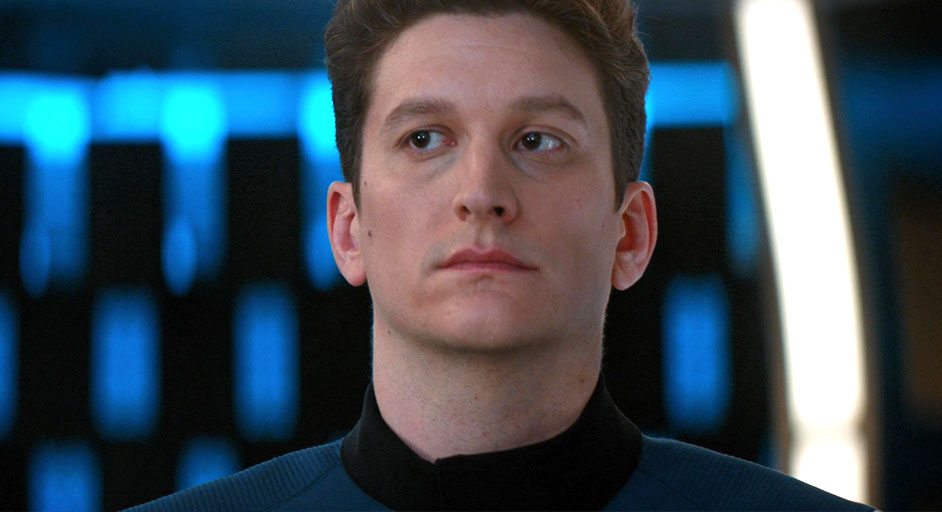 TREKCORE: With the Boundless, you set up this interesting race — and their war against the Rengru — which culminates in a classic Star Trek ending that’s borne out of communication, tolerance, and seeking to understand another’s perspective.
TREKCORE: With the Boundless, you set up this interesting race — and their war against the Rengru — which culminates in a classic Star Trek ending that’s borne out of communication, tolerance, and seeking to understand another’s perspective.
What was your process for putting that kind of story together and your inspiration behind those two races?
MILLER: I had written a number of armored military outfits [in my books] before, but doing something for Star Trek gave me the chance to do something that was different than a simple military campaign with a victory at the end on either side.
I wanted to do something where it was clear that these two groups, at their origin, are connected in ways that neither group remembers, and that the war has gone on for a very long time and metastasized to become something where fighting has become an end unto itself for the creatures on both sides.
I wanted it to be a situation where, if the Enterprise had been aware of what was going on and had not been caught off guard and had not had its crew divided and sub-divided over the course of the book, it might be one of those storylines that in the TV show could be resolved in a single episode. That could not happen here because we have an entire year to fill, and so I looked at ways to have the military portion of the story extend longer out of necessity.
That also allowed us, in the case of Pike and Spock, to have a long period of time where they’re only able to converse with one another, which allows them to bond. It also gave me the chance to take the Connolly character, and another character [drafted by the Boundless] named Baladon, and develop a funny friendship for them because they have been basically bearing arms for all this time for the Boundless.
It is really only when all the pieces come together – if you think about the way this wraps up – it would not wrap up happily without information that comes from Pike, Spock, and Number One, and Connolly. They all have pieces of the puzzle.
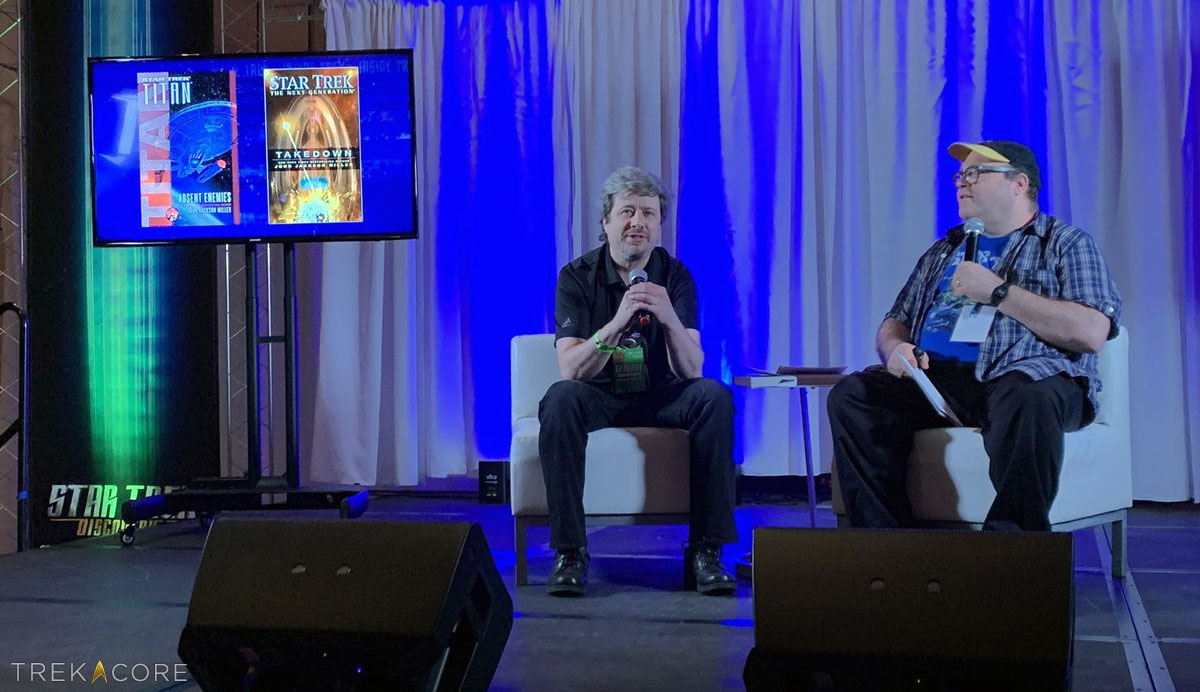
TREKCORE: You have a habit of revisiting rarely-seen Trek alien species in your novels, like the Cytherians in Takedown, and Ardra in the Prey trilogy. What led you to Morn’s species, the Lurians, in The Enterprise War?
MILLER: It’s actually one of the very first races I wrote about. There’s a Star Trek: Titan eBook, my very first thing I did Trek, called Absent Enemies. The story is about a group of Lurians who are at war with another group on a planet. People who have read The Enterprise War should go read that one next, because they will find the founder of that particular settlement that we see in that book has a very familiar name.
I wanted to do something where there was a character who went against the type we see with Morn. I wanted to have a leader character who was erudite, but also quite brutal, and filled with moments of black humor, and have him surrounded by this much more taciturn and not particularly competent family that he is dealing with.
So by bringing them in I get to sort of do a bit of a feint at the beginning [of the book]. Readers encounter the Lurians first, believing that they might be the villains for the book, and then we find out they’re victims just like everybody else and that sort of underscores how the Boundless are very efficient comparatively, and it also gives us a chance to show how their society normally works.
Their numbers are stocked by people like Baladon from the Lurians who are taken into this particular war and then adapt to it.
TREKCORE: The versions of Pike and Spock we met in “The Cage” are quite different from Discovery’s take on the characters, and The Enterprise War covers the time between those two periods in the officers’ lives. How did you approach bridging the gap between each version of Pike and Spock?
MILLER: I think we have in Pike [a number of] conflicting elements. He’s over-protective of his crew. I introduced a story from his childhood as a prologue that sort of sets him up for a lifetime of feeling that way. And yet, he also has to feel at the same time that things are going to happen and that he’s going to be called upon to make some hard decisions.
I sort of have him reaching for any straw – at one or two points in the book he very much wants to go get involved. He wants to take the risk, to get involved in the war, he’s just looking for any excuse that he can get behind that will make it something that his old self would accept.
There’s a line in there from Boyce, where he says ‘protective Pike’ and ‘adventure Pike’ are always in conflict. Pike is frequently thwarted in this book, in terms of getting to make a decision one way or another, but when he does learn that his people are alive he throws himself fully into the mission of trying to get them all back regardless of what his other obligations or orders are.
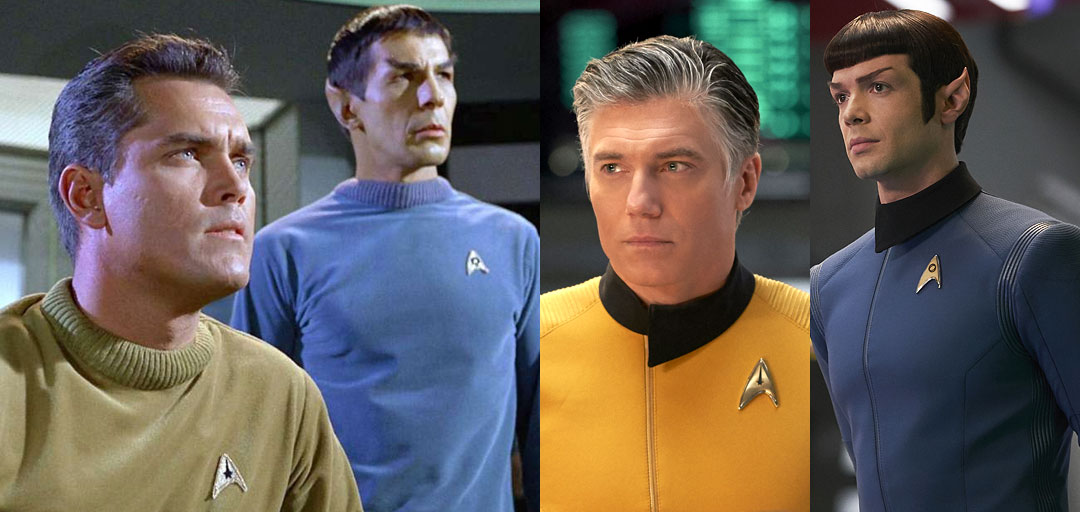
With Spock, there was a bit of a requirement that we show what happened to him [leading up to] the middle of [Discovery] – where he was and what happened to him – so that was a case where I did need to watch [“Light and Shadows”] to dress the setting and scenery appropriately in the book.
But otherwise, I wanted to have him going through quite a long period of isolation and contemplation leading up to that, and also going through very rough times both with the Boundless and then alone.
When he comes back from this situation and his encounters it needs to be the case that Pike and the others assume that whatever happened to him is related to whatever his trauma was during the year that he was away, and they do not know the larger details of what he saw.
TREKCORE: there are some innovative action scenes in the novel, like having the Enterprise perform a saucer separation… and then landing upside down on a moon. It must be sometimes challenging to come up with new ways to present starship action!
MILLER: I have done a lot of wild starship combat scenarios, between Takedown and the Prey trilogy. Here, I knew ahead of time I wanted to do the scenario where the saucer is separated and it then crash lands on an ocean, and that there would be this very big science project that they would have to work on getting the ship ready to do anything again.
Since I knew I wanted that specific scene and section of the book, it was just a matter of working backward and plugging it into what I knew I wanted to do, which was to have a sequence where the Boundless would be trying to take the Enterprise, and that the Rengru would be arriving to try to stop them, and at the same time we have the damage mounting to the ship forcing the separation of the saucer.
I was able to get in some fun moments with having these boarders who are trying to get into the ship – and well – what’s a fun thing to do now? Let’s start the ship spinning! So, I visualize these sequences and I hope that I have described the elements of the setting and what the characters are doing well enough that the readers can understand too.
TREKCORE: The saucer spinning is such a neat little idea that nobody, as far as I know, has really played with before…
MILLER: Yes, and I was looking around for previous mentions of saucer section separation. A lot of what we came up with in the story I had to figure out for the first time – like what parts of Pike’s Enterprise would still work after the saucer was separated.
I had a lot of help from Scott Pearson, who is the proofreader for the book for Simon & Schuster. There was a lot of time where we were going back and forth looking at the blueprints and figuring out “okay, this would work but that would not.”
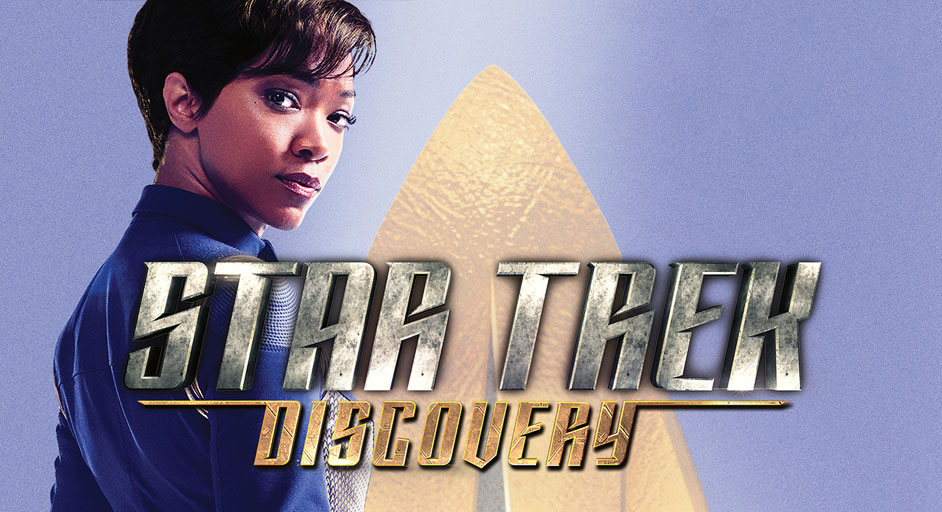
TREKCORE: The Enterprise War also works to reconcile some inconsistencies between Discovery Season 2 and Desperate Hours, the 2017 tie-in novel which featured Pike, Spock, and the Enterprise meeting the crew of the Shenzhou. Was that your idea?
MILLER: It was my idea to include that, and it was with the full approval of the [Discovery] writers’ room. It was not a difficult thing to do on my end. Obviously, we want everything to work, and I suggested a solution and Kirsten [Beyer] said “let’s do it!”
Every so often the way that different production schedules function in novels, comics, TV shows and movies there will be unavoidable things that seem like glitches. But usually there is something we can resolve or reconcile in a later moment, or it can often be made into a story point.
TREKCORE: You’ve written for a lot of franchise now, including a lot for Star Wars. What are the similarities between writing for Star Trek and Star Wars?
MILLER: I have to say, one of the Star Trek movies that I’m fondest of is Star Trek III: The Search for Spock. Obviously, I wrote the Prey trilogy as my fan letter to that movie because that is a story where more than just about anything else in Star Trek it goes beyond being a story about the Federation or Starfleet, and being one where we embrace that this is a family.
We embrace that this is a group of individuals who have worked together, who care for each other, who trust one another, and who are going to do what they have to do in order to save one of their own. And that is a tension that we see in this book, in that Pike is willing to do whatever he has to do in order to save his own, and there is always that tension about whether we should obey Starfleet or not.
Well, you see those same moments in Star Wars. Luke Skywalker goes to save his friends in The Empire Strikes Back, against the orders of his own superiors [like Obi Wan and Yoda]. He does what he feels is right to protect his family and friends, and the way I see the movie, if he had not done so, he would have fallen to the Dark Side in the third film.
So, in all these cases there is a devotion that these characters have to one another that goes above whatever they owe to the Rebellion, the Jedi Order, Starfleet, or the Federation.
TREKCORE: There’s a family aspect to both franchises, which is always a powerful theme for both.
MILLER: Whether it’s a war or an exploration, these are human endeavors. They’re made up of people. Obviously, the bigger issue of the day that we’re writing about – the Klingon War or whatever else happens to be going on – those are in the background and provide the structure to what we’re seeing.
TREKCORE: What’s next for you? You mentioned in Las Vegas you’re doing another Discovery novel…
MILLER: [That’s] the book I’m working on now. I cannot say anything about it, but that’s a 2020 release.
Between now and then I have several reprint volumes coming out – my Star Wars kids comic from last year is being reprinted by IDW in a book called Star Wars Adventures: Pomp and Circumstance. That has my first Luke and Leia story ever, after all the other Star Wars stories I’ve written.
Then also a company called Dynamite is releasing the graphic novel compendium of the 40th anniversary comic series that I did for the original Battlestar Galactica, so that gives people the chance to get that entire story in one bite as well.
Thanks to John for taking the time to catch up on his new book. The Enterprise War is a great story, and we strongly recommend picking it up if you are interested.
For more information about John and his upcoming work, please visit his official website or follow him on Twitter.

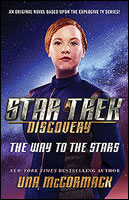 Novel #4:
Novel #4: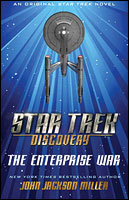 Novel #5:
Novel #5: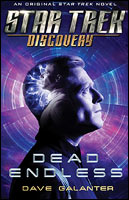 Novel #6:
Novel #6: